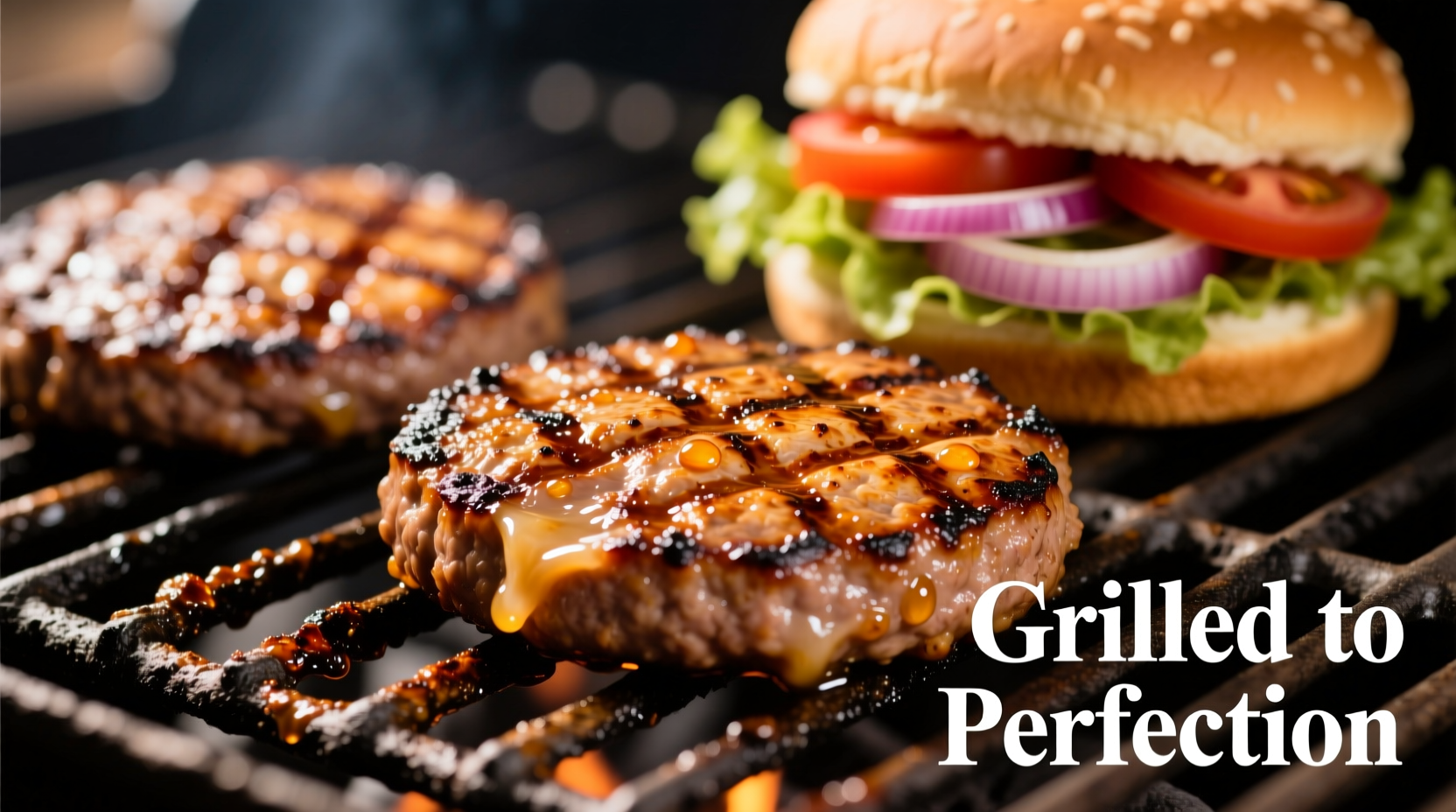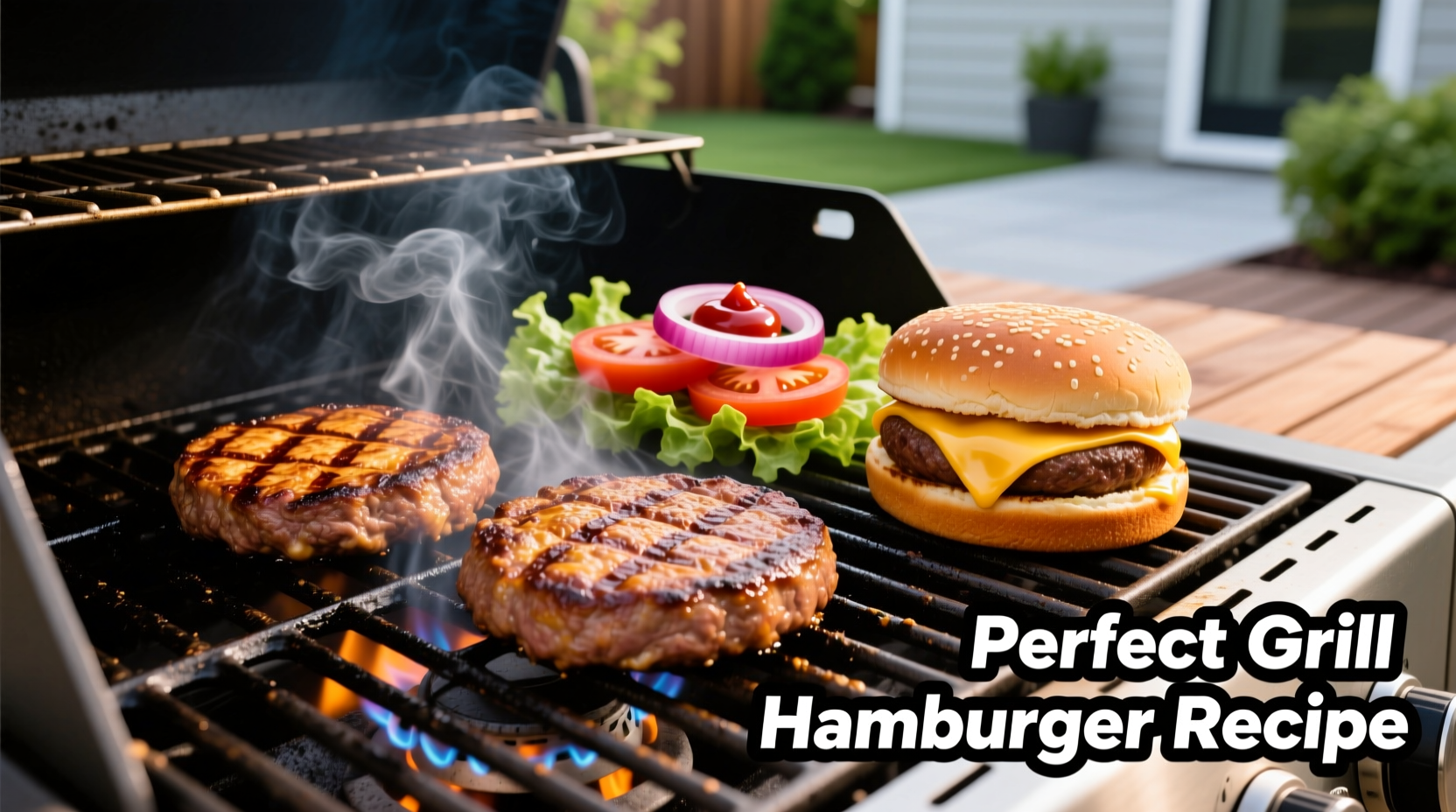Achieve perfectly grilled hamburgers every time with these professional techniques: Preheat your gas grill to 400-450°F, form 3/4-inch thick patties with a slight dimple, cook 3-4 minutes per side for medium, and let rest 5 minutes before serving. This guide reveals precise timing, temperature control, and pro tips to prevent common mistakes like flare-ups and dry burgers.
Master Gas Grill Hamburger Perfection: A Step-by-Step Guide
Grilling hamburgers on a gas grill seems simple, but achieving that perfect balance of juicy interior and flavorful sear requires specific techniques. Whether you're hosting a summer barbecue or preparing a weeknight dinner, understanding the science behind gas grill hamburger cooking transforms your results from ordinary to exceptional. This comprehensive guide provides actionable steps based on culinary science and professional grilling expertise.Pre-Grill Preparation: Setting Yourself Up for Success
Before touching your grill, proper preparation ensures optimal results. Start with selecting the right ground beef—80% lean to 20% fat ratio provides the ideal moisture and flavor balance. Form patties that are 3/4 to 1 inch thick with a slight indentation in the center to prevent bulging during cooking.| Doneness Level | Internal Temperature | USDA Safety Standard |
|---|---|---|
| Medium-Rare | 130-135°F | Not recommended for ground beef |
| Medium | 140-145°F | Risk of foodborne illness |
| Medium-Well | 150-155°F | Approaching safety threshold |
| Well-Done | 160°F | USDA minimum safe temperature |
The Cooking Process: Timing, Temperature, and Technique
 Place patties on the hot side of the grill with the dimpled side down. Avoid pressing down with your spatula—this forces out precious juices. For standard 1/4 to 1/3 pound patties:
Place patties on the hot side of the grill with the dimpled side down. Avoid pressing down with your spatula—this forces out precious juices. For standard 1/4 to 1/3 pound patties:
- Medium-rare to medium: 3-4 minutes per side
- Medium-well: 4-5 minutes per side
- Well-done: 5-6 minutes per side
Troubleshooting Common Gas Grill Hamburger Problems
Flare-ups: Move patties to the indirect heat zone temporarily and trim excess fat from edges before grilling. Regularly clean grease trays to minimize flare-up risks. Dry burgers: Using meat with adequate fat content (at least 15% fat) and avoiding overcooking are crucial. Insert an instant-read thermometer horizontally through the side of the patty to check doneness without losing juices. Sticking patties: Ensure proper preheating and clean grates. Oil patties lightly rather than the grates for better results. Wait until burgers release naturally before attempting to flip. Inconsistent cooking: Create uniform patties using a kitchen scale. Thicker patties require lowering the heat or moving to indirect heat after initial searing.Resting and Serving: The Final Critical Steps
After removing burgers from the grill, let them rest for 3-5 minutes on a wire rack. This allows juices to redistribute throughout the patty. During this time, toast your buns on the grill—cut side down—for 30-60 seconds. When assembling, place burgers on the bottom bun with any wet ingredients (like sauces) first to create a moisture barrier that prevents sogginess. Add toppings in layers that complement texture and temperature—crisp lettuce and tomatoes first, followed by cheese and cooked toppings.Advanced Gas Grill Hamburger Techniques
For deeper flavor development, try these professional methods:- Smoking infusion: Add wood chips to a smoker box for 15 minutes of smoke flavor before cooking
- Reverse sear for thick patties: Start on indirect heat until 110°F internal, then sear on high heat
- Compound butter topping: Place herb butter on burgers during resting for added richness











 浙公网安备
33010002000092号
浙公网安备
33010002000092号 浙B2-20120091-4
浙B2-20120091-4